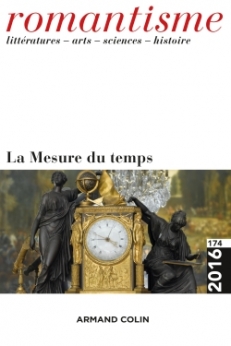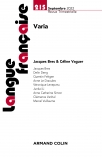
Romantisme n° 174 (4/2016)
Pour acheter ce numéro, contactez-nous
Recevez les numéros de l'année en cours et accédez à l'intégralité des articles en ligne.
La précision dans l’horlogerie mécanique a quasiment atteint son summum dès la fin du XVIIIe siècle grâce aux recherches sur la longitude (la mesure du temps sert alors d’outil de mesure de l’espace). La mise à disposition d’un grand nombre de montres, pendules et autres chronomètres suffisamment précis au XIXe siècle pour un public plus large a ouvert de nouveaux horizons d’utilisation. Deux axes sont examinés ici. Il s’agit d’une part d’interroger l’affichage de l’heure comme repère social puisqu’il dépend de conventions. Or, l’étalon de l’heure légale locale est remis en question, de la course du soleil – irrégulière mais traditionnelle – à la loi de la mécanique – régulière mais plus loin de la nature. D’autre part, l’indication précise des durées prend de l’importance, comme en témoignent les performances chiffrées très précisément des courses de chevaux émanant de l’anglomanie ambiante.
Mechanical clocks reached close to a peak in precision as early as the end of the 18th century, thanks to research in longitude (the measure of time is then the measure of space). The availability of a great many watches, clocks, and other chronometers during the 19th century for a much wider audience opened the way to innovations in the use of the counting of time. Two developments are studied in this paper. On the one hand, the way time is made public is studied inasmuch as it depends on conventions. However, the standard local time was put in question, whether that of the sun’s course – traditional but irregular – or that provided by mechanical means – regular but far form nature. On the other, the precise calculation of duration became important, as the way the performances of horses in horse racing came to be very precisely measured and accounted for, in an atmosphere of pervasive anglo-mania, testify.

